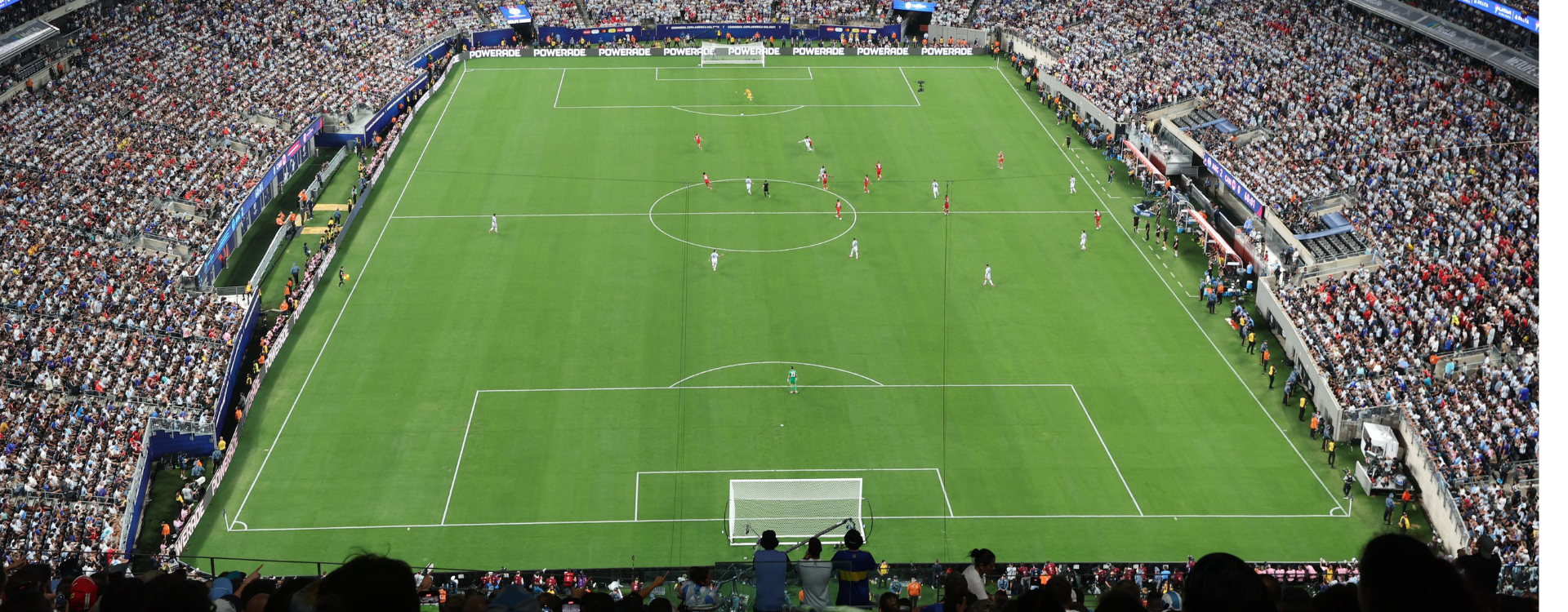Field and screen: Designing a stadium for today’s fan experience
July 12, 2024 | By Joshua Farrington
The summer of 2024 might come to be remembered as the summer of stadia, with giant arenas pulling in crowds for some of the biggest events in the world, from high-stakes international competitions like 2024 CONMBEBOL Copa América, combing to a head Sunday, to Taylor Swift’s juggernaut Eras tour that continues to disrupt economies across Europe.
If you like enormous crowds, showstopping spectacles, and eye-poppingly expensive snacks, you’re truly living in a golden age.
Keeping these venues running in a digital age is a challenge almost as big as putting on some of these performances. One of the biggest issues is simply catering to the vast demand for data that such crowds generate. At Swift’s run of three Wembley Stadium shows in June, 90,000 music fans crammed into the west London venue each night, snapping up limited-edition merchandise, swapping friendship bracelets and singing along. They also obsessively documented their experiences across social media, as noted by U.K. mobile network EE.
On the Saturday night alone, fans burned through 5.57 terabytes of data, the equivalent of sharing 1.7 million images, or streaming Swift’s extensive back catalogue 4,500 times on repeat — a feat that would take even the most diehard Swifties a decade to complete, according to EE.
Many venues are now trying to contend with handling that kind of capacity. (The horrors of seeing a blank space when scrolling one’s Instagram feed!) Everton, one of England’s top soccer teams, is in the process of constructing a new home ground on the Liverpool waterfront, and in an interview with Tech Informed, Phil Davis, the club’s director of technology, spoke of making the new 52,000-seat venue a “future-proof fortress.”
“Fans want to be able to interact socially with the game,” he said. “You have traditional fans who maybe won’t use their phones during a match, but for younger fans expect that ability to interact and connect while inside the venue.” Connectivity is an essential component of the stadium experience, “no longer just a nice-to-have,” he added.
Older arenas retrofitted for the digital age often place antennas above the fans in stadium’s rafters, but Everton is using under-seat access points — one for every 75 seats in the stadium — along with several above to ensure more reliable connectivity.
In Spain, the Barcelona soccer club recently signed a four-year agreement with Hewlett Packard Enterprise for building its advanced networking and cloud capabilities into the revamp of its famed Camp Nou stadium and nearby Espai Barça complex, including a private 5G network and virtual reality and gamification applications for fans.
Technology and live sporting events have long gone hand in hand, from the introduction of instant replay at 1963’s Army-Navy football game to the development of computer vision tracking software in the 1990s. At last year’s MLB All-Star Game, fans got a novel view of proceedings thanks to the use of drone cameras inside the stadium, believed to be the first time the concept had been used for a game of that scale.
In recent years, soccer has been transformed by the addition of the video assistant referee, or VAR, leading to moments of high tension as the officials on the pitch wait for painstaking video review before awarding controversial goals or making offside decisions. And while those decisions are not foolproof, an examination of Premier League data found that 82% of the decisions made by referees before VAR were correct; with VAR, that number was 96%.
VAR uses dedicated tracking cameras trained on the ball and on each player, tracking them 50 times per second, with the data crunched in real-time by artificial intelligence, helping human referees make calls more faster and more accurately.
The 2022 World Cup in Qatar saw another twist with a sensor placed inside the soccer ball, which sent data to the video operations room 500 times per second for a very precise detection of kick points, according to FIFA. This can trigger an automated offside alert, and after a decision has been made by the referee on the pitch, the data is used to generate a 3D animation showing the position of the player’s limbs that is broadcast to the stadium and TV watchers.
“AI can make these decisions quickly so that the referee knows whether the player is offside or not, or if it’s a goal or no goal,” John Eric Goff, a sports physicist, told Nature magazine last month. “The old technology took roughly 70 seconds on average to return the computer-generated determination of offside. Now it’s projected to be under half a minute, so referees will be able to make these calls faster … Things such as fouls and yellow or red cards still require human decision-making.” For now, at least.